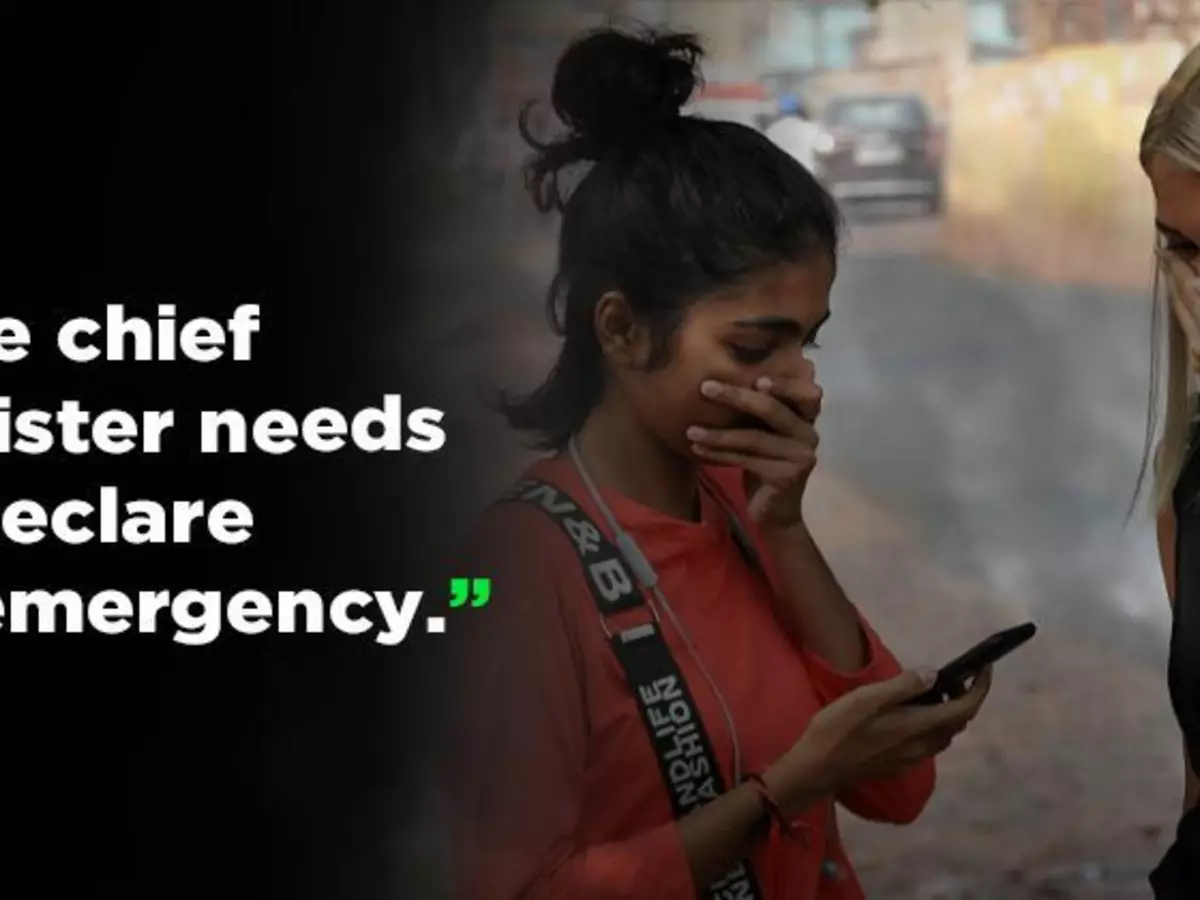In #Breathless Delhi, Air Is Still 10 Times The Safe Limit. You Should Worry Before You Breathe
It's as if we are already used to it ¡ª the smog, the dirt and the filth.

It's as if we are already used to it ¡ª the smog, the dirt and the filth.
There's one day of clear blue skies but what follows is a week of toxic air choking the historic city of Delhi until it can choke no more. Perhaps, we have all made ourselves far too used to the grim air quality. What else would define our combined negligence over the issue that directly risks our lives and that of our loved ones?
Haze shrouded India's capital city again on Monday, with residents braving dangerous air quality to return to work after a weekend of clearer air and slightly better weather.

News agency Reuters has reported that the air quality index of the U.S. Embassy in New Delhi stood at "hazardous" levels of 497, with levels of airborne PM 2.5 - particles that can reach deep into the lungs - touching nearly 700 in parts of the city.
That is more than 10 times the recommended safe limit of 60 for PM 2.5.
A dip in wind speed and temperature is making air denser, trapping pollutants and worsening air quality, said Vivek Chattopadhyay, a senior programme manager at New Delhi-based non-profit Centre for Science and Environment.
The city government of Delhi, a metropolis of over 20 million, is restricting the use of private cars until Nov. 15 with an "odd-even" system - allowing cars on alternate days, depending on whether their licence plate ends in an odd or even number.

The scheme, which includes a two-day waiver for a religious festival, has helped little, prompting environmentalists to call for urgent action.
"The chief minister (of Delhi) needs to declare an emergency," said Bharati Chaturvedi, founder of the Chintan environmental advocacy group. "If this was the plague, he would have declared an emergency."
Every year, as India's winter season approaches, farmers in Delhi's neighbouring Punjab and Haryana states, where agriculture is a mainstay, burn off rice field stubble in preparation for the sowing season.
The smoke from fields mixes with vehicle exhaust and construction dust, making Delhi the world's most-polluted capital. The Supreme Court last week chided authorities for their failure to curb the pollution and asked the city government, its neighbouring states and the federal government to work together to help improve air quality.

In the meanwhile, researchers have found a growing link between agricultural fire and air pollution with the impact of the former aggravating in the last decade. Researchers at an international conference on forestry at TERI School of Advanced Studies found that surprisingly, agricultural fires have been the same on the Pakistan side of Punjab (Western Punjab), while the fires have increased in Punjab (India) since 2008.
According to IANS, there has been around 2 per cent increase in aerosol concentration in the last three decades. The black carbon concentration and absorbing aerosols over the Indo Gangetic plain has been increasing due to biomass burning and other activities which peak during post-monsoon seasons (October-December).
